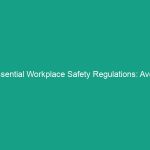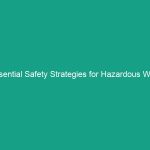Introduction
Good morning team! Today, we’re diving into an essential topic that affects our daily operations and overall Safety: the coordination of multiple contractors to prevent conflicts. As our projects grow in complexity and scale, effective collaboration becomes crucial. By understanding how to coordinate various contractors, we can prevent conflicts that may lead to Safety Hazards, project delays, and increased costs.
Why is this important? Well, when multiple contractors are involved, the potential for miscommunication or overlap in responsibilities can lead to dangerous situations. By addressing this issue head-on, we can create a safer, more efficient work Environment for everyone.
Understanding Coordination of Multiple Contractors
Coordination of multiple contractors involves managing the interactions and responsibilities of various teams working on a project. This process is vital because it helps ensure that everyone is on the same page, reducing the risk of accidents and misunderstandings.
In our industry, we often have different contractors handling various tasks, from electrical work to plumbing and construction. Each contractor has specific expertise, but without proper coordination, their work can conflict, leading to safety issues.
One common misconception is that simply having a project manager is enough for effective coordination. While a project manager plays a crucial role, it’s also about fostering communication, establishing clear protocols, and ensuring everyone understands their roles and responsibilities.
Key Hazards, Risks, and Safety Considerations
When multiple contractors are working on a site, several hazards may arise, including:
- Miscommunication: Without clear communication, tasks may overlap or conflict, increasing the risk of accidents.
- Inadequate Safety Measures: Different contractors may have different safety Standards, leading to inconsistencies and potential hazards.
- Increased traffic: More personnel can lead to congested work areas, raising the risk of slips, trips, and falls.
- Equipment conflicts: Multiple teams may need to use the same tools or machinery, leading to potential accidents.
Ignoring these risks can result in serious consequences, including injuries, project delays, and financial losses. It’s crucial to address these issues proactively to ensure a safe working environment.
Best Practices, Procedures, & Actionable Advice
To effectively coordinate multiple contractors and prevent conflicts, follow these Best Practices:
1. Establish Clear Communication Channels
Set up regular meetings to discuss project progress and any potential issues. Use communication tools like emails, chat apps, or project management software to keep everyone informed.
2. Define Roles and Responsibilities
Ensure that every contractor understands their specific tasks and how they fit into the overall project. Create a detailed project plan that outlines who is responsible for what.
3. Develop a Safety Plan
Collaborate with all contractors to create a comprehensive safety plan that includes emergency Procedures, safety protocols, and risk assessments. Make sure everyone is trained on this plan.
4. Coordinate Schedules
To avoid overlap and confusion, coordinate work schedules among contractors. Use a shared calendar to track project timelines and deadlines.
5. Conduct Safety Audits
Regularly inspect the worksite to ensure compliance with safety standards. Identify and address any hazards immediately.
Real-World Example
In a recent project, two contractors were working simultaneously on different aspects of a building renovation. Due to a lack of communication, one team began drilling in an area where another team was installing electrical wiring. This conflict not only delayed the project but also posed a significant safety risk. By implementing a clear communication plan and scheduling work in advance, future projects can avoid similar issues.
Regulations, Standards, and Compliance
Compliance with safety Regulations is critical in coordinating multiple contractors. Relevant standards include OSHA regulations, which mandate that employers provide a safe working environment. Familiarize yourself with these regulations to ensure that all contractors adhere to them.
Additionally, maintaining compliance not only protects employees but also mitigates legal and financial risks associated with workplace accidents. Understanding and implementing these standards can significantly enhance project safety.
Employee Engagement & Discussion
Now, let’s open the floor for discussion. What safety challenges have you encountered related to coordinating multiple contractors? How can we improve our current processes to enhance safety and communication? Your insights are valuable, and sharing experiences can help us all learn and grow.
Conclusion & Key Takeaways
In conclusion, effectively coordinating multiple contractors is essential for maintaining Workplace Safety and efficiency. By establishing clear communication, defining roles, developing a robust safety plan, coordinating schedules, and conducting regular audits, we can prevent conflicts that lead to accidents and project delays.
Remember, prioritizing safety is everyone’s responsibility. Thank you for your attention and commitment to creating a safer work environment. Let’s work together to ensure that our projects run smoothly and safely!


